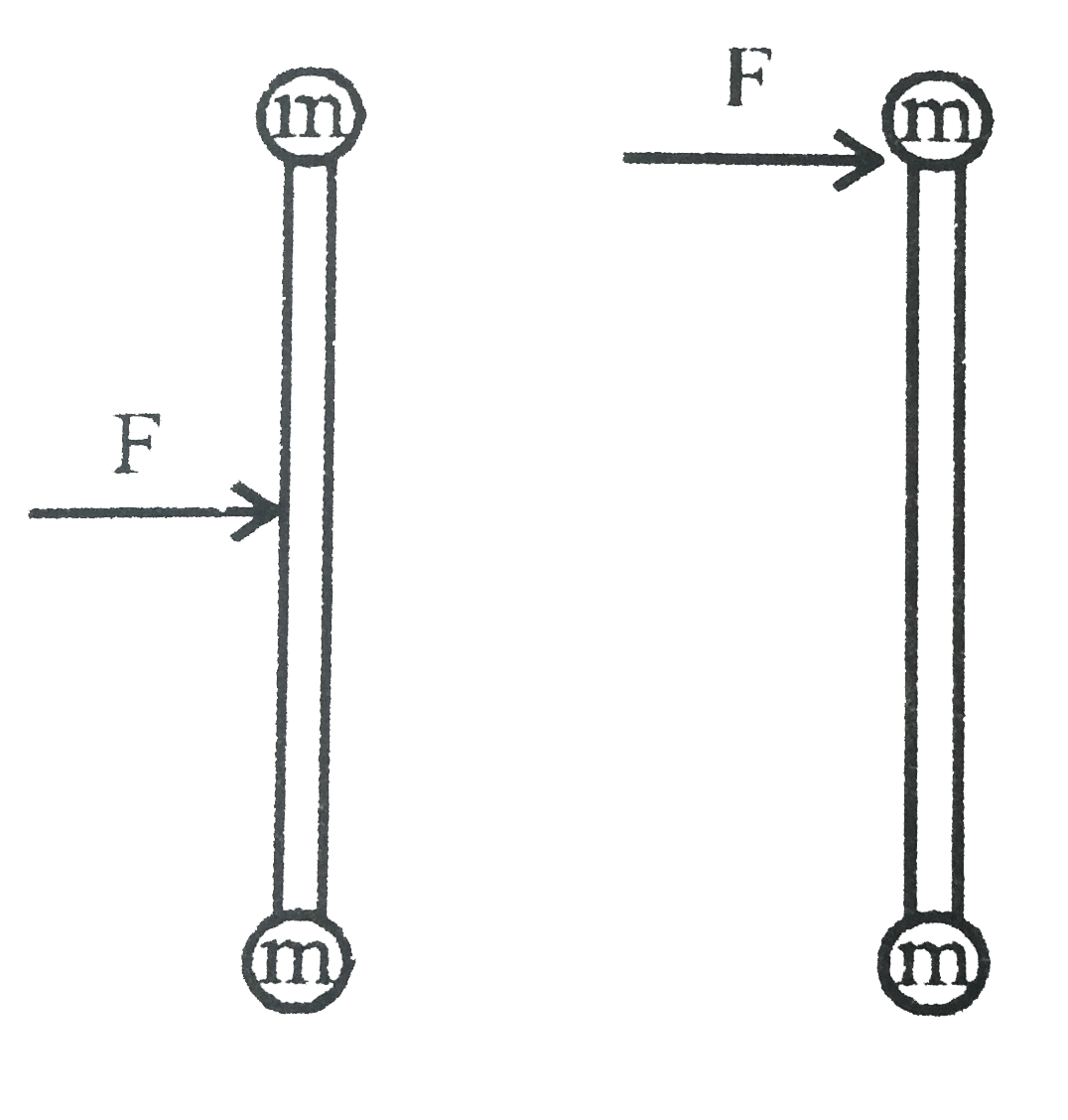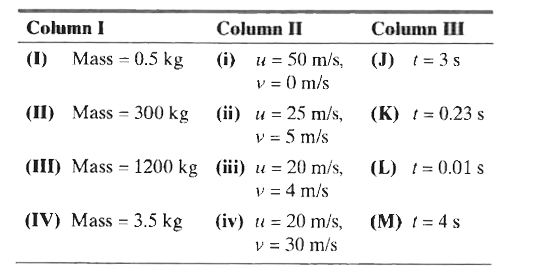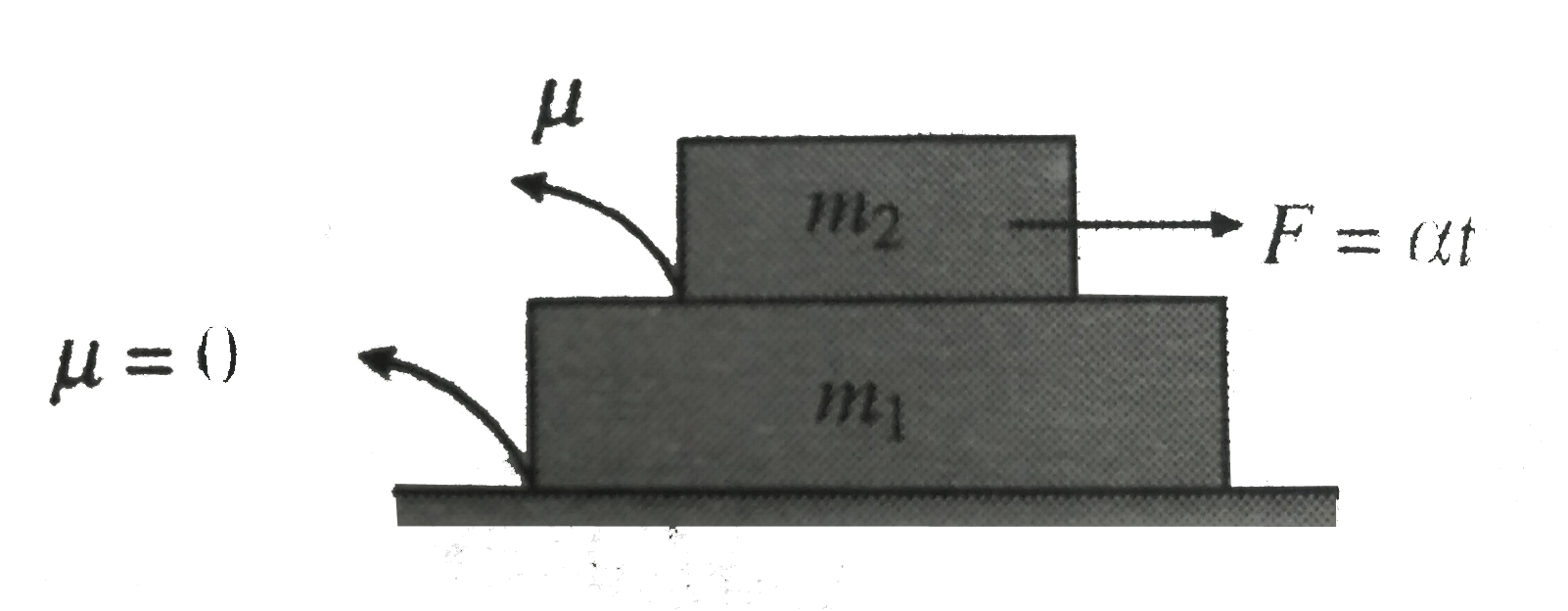A force F is applied to a dumbbell for a time interval, t as in (i) and then as in (ii). In which case does the dumbbell acquire the greater centre-of -mass speed ?
 .
.
(i)
(ii)
there is no difference
the answer depends on the rotional inertia of the dumbbell
The correct Answer is:C

acm=Ft2m
which is same in both cases
vcm=acmt
so speed of centre of mass will be same in both cases.
Similar Questions
A uniform rod of mass m and length l is struck at an end by a force F perpendicular to the rod for a short time interval t. Calculate
a. the speed of the centre of mass ,b. the angular speed of the rod about centre of mass, c. the kinetic energy of the rod and d. the angular moment of the rod about the centre of mass after the force has stopped to act. Assume that t is so small that the rod does not apreciably change its direction while the force acts.View SolutionA force F=2t2 is applied to the cart initially at rest. The speed of the cart at t = 5 s is -
 View Solution
View Solution
Knowledge Check
- Question 1 - Select One
A force of 75 N is applied to a block of mass 25 kg, resting on a smooth horizontal surface. In how much time, the block will acquire a speed of 12 m/s?
A1 secB2secC4 secD8 sec - Question 2 - Select One
Assertion: A constant force F is applied on two blocks and one spring system as shown in figure. Velocity of centre of mass increases linearly with time.

Reason: Acceleration of centre of mass is constant.A(a) If both Assertion and Reason are true and the Reason is correct explanation of the Assertion.B(b) If both Assertion and Reason are true but Reason is not the correct explanation of Assertion.C(c) If Assertion is true, but the Reason is false.D(d) If Assertion is false but the Reason is true. - Question 3 - Select One or More
In the given table, Column I shows masses of the objects, Column II shows the initial and final velocity of the object after force is applied on it and Column III shows the time span for which force is applied on the object.

Conditions for a dumbbell with the force of 1000 N applied in same direction of motion are :A(III) (i) (L)B(IV) (i) (K)C(I) (iv) (M)D(II) (iv) (J)
A uniform rod of mass m and length l is struck at an end by a force F perpendicular to the rod for a short time interval t. Calculate
the angular momentum of the rod about the centre of mass after the force has stopped to act. Assume that t is so small that the rod does not appreciably change its direction while the force acts.View Solution
A force F is applied on block A of mass M so that the tension in light string also becomes F when block B of mass m acquires an equilibrium state with respect to block A. find the force F. Give your answer in terms of m, M and g.View SolutionTorques of equal magnitude are applied to a hollow cylinder and a solid sphere , both having the same mass and radius . The cylinder is free to rotate about its standard axis of symmetry , and the sphere is free to rotate about an axis passing through its centre . Which of the two will acquire a greater angular speed after a given time .
View SolutionIn the Fig force F=αt is applied on the block of mass m2. Here α is a constant and t is the time .Find the acceleration of the block Also draw the acceleration time graph of both the block
 View Solution
View SolutionA force F is applied to the initially, stationary cart. The variation of force with time is shown in the figure. The speed of cart at t = 5 s is
 View Solution
View Solution

